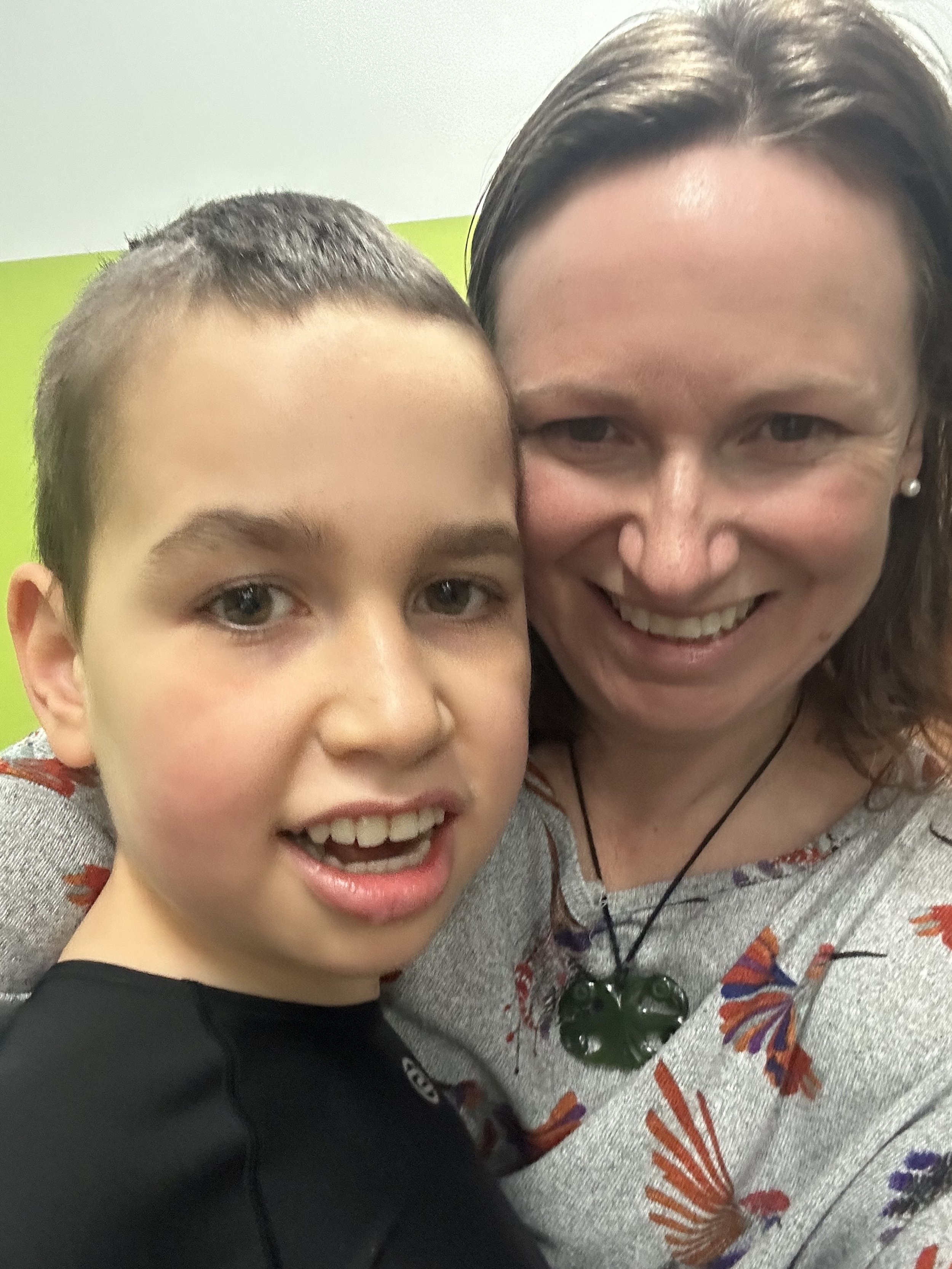A rare challenge
Tama stands on his own thanks to the Neurosuit.
The big smile on Tama Trueman’s face is possibly the best way to sum up triumph over adversity.
The 13-year-old was born with a disease so rare that they didn’t even have a name for it until he was two years old, and it took his family another eight years to find out what that was.
Tama, from Whakamaru, is the youngest of five children and his Mum, Taupō District councillor Kirsty Trueman, says keeping Tama happy, safe, fed and exercised is a job for the whole family.
He has Pura Syndrome, a rare and complex condition that has led to numerous health challenges. Tama experiences hypotonia, is non-verbal, suffers from frequent seizures, and requires a feeding tube. He has undergone several surgeries.
“When he was born, I just knew something was wrong because he wasn’t crying.
“He was on oxygen for first year of his life and his muscles were really weak but they couldn’t tell us why.”
When he was three-years-old they took him to a paediatric neurological and physical centre in Los Angeles – the NAPA Centre - and he was given special therapy.
“It was amazing, he couldn’t even sit up and through this therapy called Cuevas Medek Exercise they had him standing and actually bearing weight on his own with very minimal support.”
They had a few other tricks to help as well, including a Neurosuit, which was based on a suit designed for Russian astronauts, to counter the muscle atrophy caused by lack of gravity.
The NAPA Centre later opened in Sydney, so it became easier to get access to the therapy.
When he was about eight-years-old, they still had no idea what was wrong, so they managed to get him into a genome sequencing research programme.
Two years later they had a diagnosis.
Kirsty said getting that diagnosis was a "eureka moment".
“Being able to finally research the condition and get in touch with other parents of children with Pura Syndrome was amazing.”
There are more than 750 people worldwide with Pura Syndrome and four children diagnosed in New Zealand.
Kirsty was involved in setting up the Pura Foundation Australia in 2023 which also incorporates New Zealand families.
She said seeing first hand the level of support available to people with disabilities in Australia, “makes me sad for children who are in NZ because it is so different”.
Kirsty and Tama Trueman
There is comparatively minimal therapy support available in New Zealand, unless a child has a condition that was covered by ACC.
Tama now has scoliosis, so he needs spinal surgery to ensure his body doesn’t continue to curve inwards and crush his organs.
Rods will need to be inserted from his neck all the way down to his pelvis, on both sides of the spine.
Surgery poses a risk that he may not be able to walk again, or that walking may be very limited, so they are planning another trip to Intensive Therapy in Australia later this year to help him relearn to walk.
“He loves walking, he really loves it so I would hate that to be taken away from him.”
They have a Givealittle page to help raise funds for the next trip.
Rare Disorders NZ chief executive Chris Higgins says there are so many people living with a rare or undiagnosed disorder (about 300,000) that their motto is “rare is everywhere”.
He said the main issue in New Zealand was getting an accurate diagnosis, and that can take years.
“Secondly, if you have a diagnosis, then what do you do?”
They were advocating for a centre for rare and undiagnosed diseases to help coordinate treatment efforts.
“We are not good in NZ at developing care plans for rare disorders.”
Last year the Ministry of Health published the first ever rare disorders strategy, but that had “stalled” Chris says.
“The rare disorders community is getting pretty frustrated at the lack of action.”
They are encouraging people to sign a petition on their website, which they will then present to Parliament.

